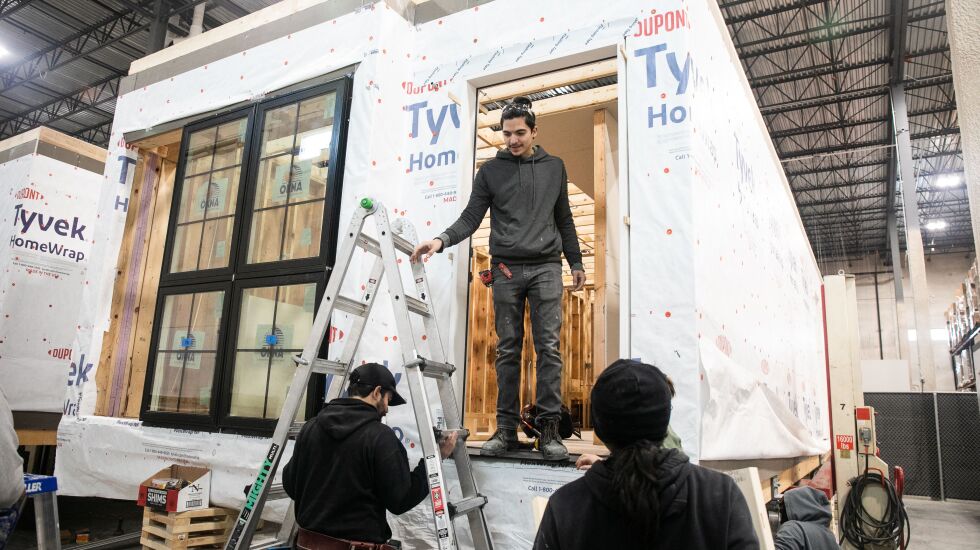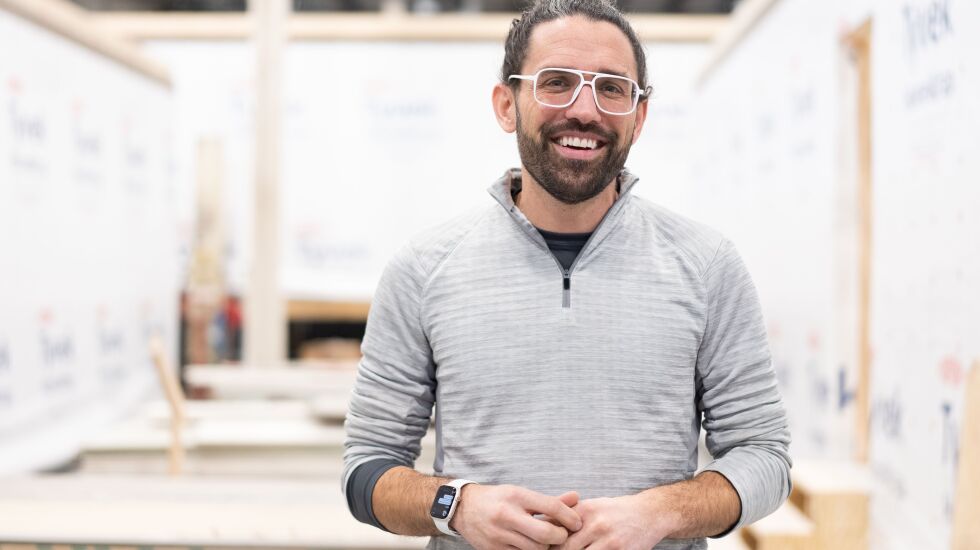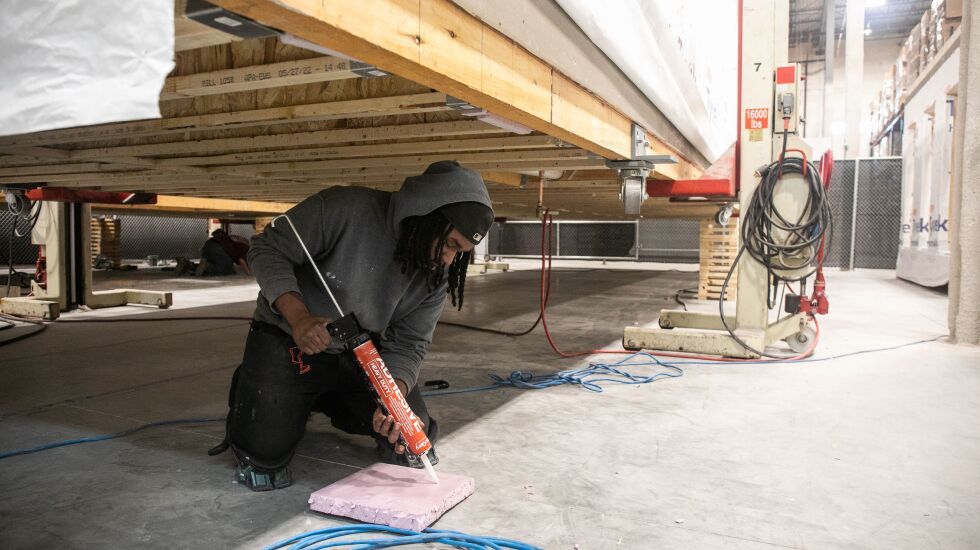
Growing up around vacant lots on the West Side, Leonore Harris dreamed of building things, making something out of nothing.
“As a kid, I used to walk around these blocks and now I’m a person helping build the neighborhood and make it look better. It feels good,” said Harris, 30.
The North Lawndale native is now a construction worker on a project to fill those vacant West Side lots with houses built by Chicagoans from blighted neighborhoods.
The plan calls for 24 single-family houses on vacant, city-owned lots surrounding Laura S. Ward Elementary School in West Humboldt Park. Seven homes will go on North Lawndale Avenue; seven on Ridgeway Avenue; and the remaining 10 on Ohio and Huron streets.
The developer, Inherent L3C, installed the first house in August and put it on the market in early November. It plans to install the second and third houses in January.

Inherent L3C builds the houses at a factory in Austin near Kilpatrick Avenue and Polk Street.
Founder Tim Swanson bought the first three lots through the Cook County Land Bank; the remaining 21 were transferred by the City Council in October.
In addition to the available lots, Swanson said the developer was drawn to the area by the need to ease housing shortages.
“We’re looking at areas where the pressures of gentrification are growing and people could be pushed out,” he said.

The three-bedroom, two-bath house at 647 N. Lawndale Ave. is priced at $375,000. Swanson said he hopes that as the construction process becomes more efficient, the price will dip below $300,000 (“something with a 2 at the front of it,” is how he put it).
Even that could be a little steep for the neighborhood. Other similar-size houses in the same 60624 ZIP code range in price from roughly $150,000 to $245,000, according to online listings.
The houses come with a few services to help new homebuyers settle in for the long term, including five years of ADT home security, life and disability insurance, and Google technology to help monitor energy use.
“Our priority is around building generational wealth through homeownership,” Swanson said.

Sonia Del Real, vice president of development and sales for the company, said it would work to connect homebuyers with opportunities and city programs that can help lower the price, especially as fears about the economy worry some buyers.
“Here we go again, entering another cycle where it’s difficult for homebuyers. But it’s just a matter of educating people,” said the 20-year veteran of the real estate business.
The developer plans to have all the houses built and installed by this time next year.
By building indoors, where conditions aren’t “blizzard-contingent,” Swanson said, the company hopes to maintain a regular schedule.
Those regular hours, of course, benefit the workers, as well — like Harris, most come from the South or West sides.

Harris found the developer after completing a three-month training program at Revolution Workshop in East Garfield Park and joined in time to help finish building the first house that went up.
As the first house was being erected, Harris couldn’t help but notice the pleased expressions on the faces of the neighbors — residents long accustomed to seeing vacant lots around them.
Now, she can’t wait to roll out the next few houses.
“Seeing these houses go up in a neighborhood that I’ve been in all my life, it means the world to me,” Harris said.
“I never thought I would be, at this stage in my life, building the community to make it better,” she added. “To know you’re doing something positive is a great feeling.”
Michael Loria is a staff reporter at the Chicago Sun-Times via Report for America, a not-for-profit journalism program that aims to bolster the paper’s coverage of communities on the South Side and West Side.









